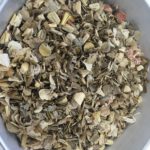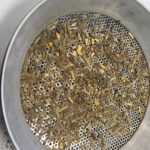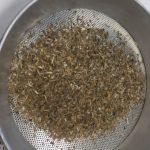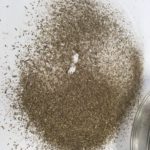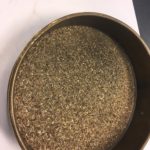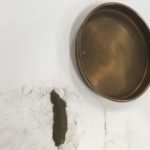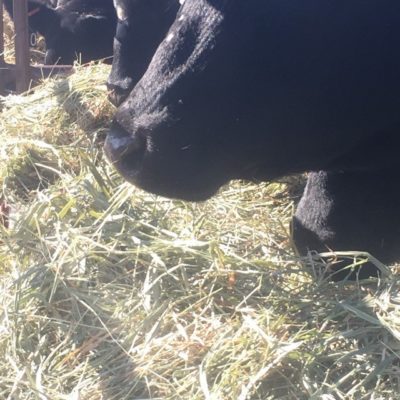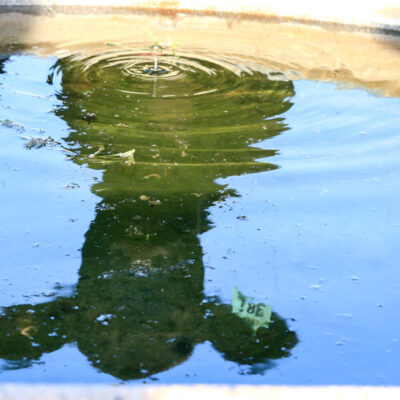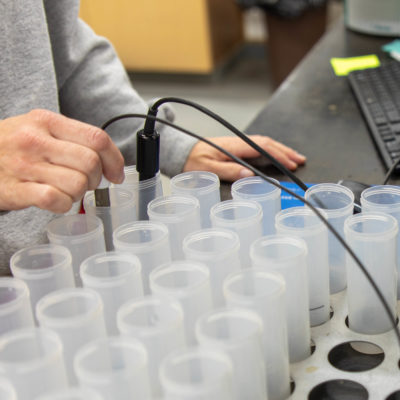You have 0 items in your cart
Here in Nebraska, down corn has been an issue for cattle producers who want to graze corn stalks. Due to a late harvest and weather patterns creating high winds, many corn fields have ears of corn just lying on the ground. Cattle are selective grazers and will pick the high energy, high starch grain over the high fiber, low energy corn stalks if given the chance to be turned out onto those fields. This can cause issues such as acidosis, bloat and eventually death among cattle. The available starch in corn grain is rapidly fermented by rumen microbes, this can result in acidosis where the pH of the rumen decreases rapidly damaging the epithelial lining of the rumen. If cattle are dealing with bouts of acidosis after eating they will likely go off feed for a short period, but then they will go right back out and consume the high grain diet that made them sick in the first place, thus resulting in another bout of acidosis. The readily available energy in the corn grain can also result in a feedlot type frothy bloat. If untreated and not taken off the high grain diet the cow will continue to eat and eventually death will occur.
Due to those risks in down corn fields, different management is necessary to graze those fields. Unfortunately, varied management also means more labor-intensive strategies. For example, the first step is to determine about how much corn is down in your field. For this I would reference UNL extension Mary Drewnoski’s calculator and article regarding down corn https://beef.unl.edu/down-corn-problem-or-opportunity-cattle-producers. After determining how much corn grain is available in the field, you can utilize a feedlot type / mob grazing strategy where you utilize electric fencing to reduce the amount of corn grain they consume daily and provide extra roughage in addition to the cornstalks already available. In this way you can gradually allow them to have more access to the field and provide less roughage to acclimate the rumen microbes to the high starch diet without the pitfalls and production losses of associated acidosis and bloat.
Another strategy some producers have looked toward is to rake and bale the cornstalks corn grain and all to mix into a total mixed ration (TMR). One issue that this strategy might run into is the ash content of the baled corn stalks may be high and may cause an impaction. Ash is defined as the total mineral content of a feed and has two sources. Endogenous ash is from the plant and is bioavailable providing micronutrients to the animal. Exogenous ash is from soil contamination of the feed. This soil is not available as micronutrients and usually just passes through the animal’s digestive tract. The problem with soil contaminated feeds is that the soil could cause a compaction within the omasum, abomasum or beginning of the small intestine. An impaction would not allow other nutrients to pass through and could cause cattle to go off feed if it is serious enough. Not enough research has been done in this area to determine how much ash or soil contamination would result in an impaction. The more likely issue however would be a decrease in performance due to the dry matter intake the ash is taking up. Roughages and forages generally range between 8-10% ash with 4-6% being endogenous. Extremely soil contaminated roughages could contain as much as 18% ash. Because cattle typically consume 2% of their body weight in dry matter, consumption of a soil contaminated feed can result in a considerable amount of the ash as dry matter intake with no nutritional value. Thereby, resulting in decreased performance for the animal. Therefore, it would be my recommendation when raking and baling down corn for a TMR to test the ash content and if it is high, mix with feeds that have a low ash content to minimize impaction risk and performance losses. It is also important to remember to test the nutritional value of the baled corn stalks before mixing them into the TMR as it has more energy value than typical cornstalks due to the high grain content and should be treated as such. In addition, soil contamination of any feed can introduce mold spores heightening animal health risks and decreasing production performance. Therefore, it would be my recommendation when raking and baling down corn for a TMR to test the ash content and if it is high, mix with feeds that have a low ash content to minimize impaction risk and performance losses.

